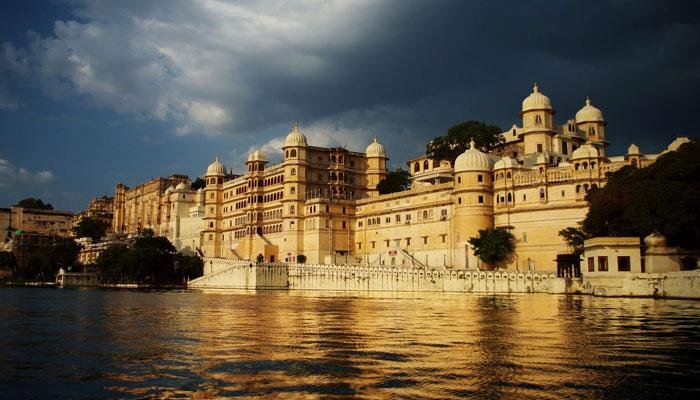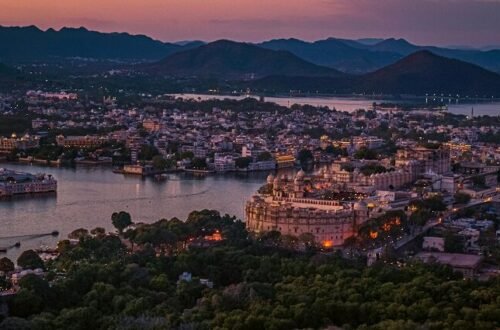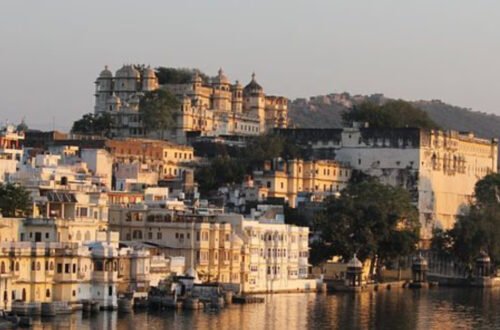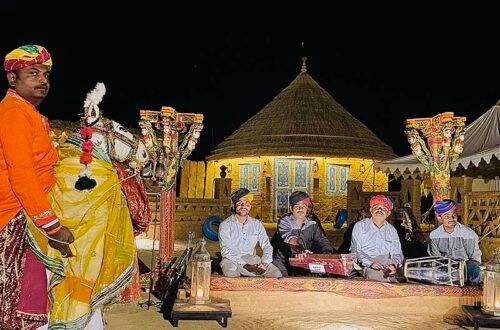Udaipur, the City of Lakes, is a place where walls talk and windows whisper. While its palaces and lakes often steal the spotlight, the true essence of Udaipur lingers quietly within the narrow alleys and old havelis—grand ancestral homes adorned with intricate carvings and centuries of secrets. These havelis, often overlooked by hurried tourists, offer an intimate glimpse into the city’s layered past and architectural soul.
What Are Havelis and Why Do They Matter?
A “haveli” is traditionally a mansion or townhouse, typically built around a central courtyard. In Udaipur, these structures served as both residences and social hubs for merchants, nobles, and artisans. The architecture reflects a fusion of Rajput, Mughal, and later colonial influences—each archway, jharokha (overhanging balcony), and chhatri (dome-shaped pavilion) contributing to a visual language of status and aesthetics.
The uniqueness of Udaipur’s havelis lies not just in their grand facades but in the stories they preserve—stories of merchant families, royal alliances, and the daily rhythms of pre-modern life.
The Symbolism Behind the Windows
The windows, often lattice-carved and strategically placed, were designed to allow women of the household to observe street processions and daily life without being seen. These jharokhas were more than architectural embellishments—they were tools of silent participation. Even today, many havelis retain these features, standing as metaphors for the city’s layered histories and social customs.
Visitors often note the strange stillness around these windows, as if time has slowed down. The shadows cast by their intricate patterns dance differently throughout the day—capturing the sun and the attention of photographers and historians alike.
Notable Havelis You Shouldn’t Miss
Some of Udaipur’s most storied havelis have been turned into museums or hotels, but many remain in the hands of local families or lie in varying stages of preservation.
- Bagore Ki Haveli: Located at Gangaur Ghat, this haveli dates back to the 18th century. Its museum rooms offer a detailed glimpse into royal costumes, artworks, and traditional living. The evening folk dance performances in the courtyard add a vibrant touch to its otherwise quiet elegance.
- Fateh Prakash Haveli (part of City Palace Complex): While technically part of the palace, this section retains the intimate atmosphere of a private residence with antique furniture and timeless views of Lake Pichola.
- Chandpole Havelis: In the old market area, several lesser-known havelis can be found. These structures, while not open to the public, feature stunning exteriors. Observing their design gives insight into the everyday architectural language of the past.
A Walk Through the Old City: Connecting the Dots
The best way to experience these havelis is through a walking tour of Udaipur’s old city. Starting from the foot of the City Palace, one can explore neighborhoods like Gangaur Ghat, Chandpole, and Jagdish Chowk. Along the way, pastel-colored walls, arched doorways, and faded frescoes tell a quiet but persistent tale.
For those planning short cultural immersions, Udaipur 2 days trips provide an efficient way to experience these architectural wonders. Within two days, a well-curated itinerary can easily cover key havelis, temples, and lakes—offering both historical context and sensory richness.
Travel Tips for Exploring Udaipur’s Havelis
- Wear Comfortable Shoes: The alleys are often cobbled and uneven.
- Start Early: Morning light beautifully enhances the carved details of the havelis.
- Respect Privacy: Some havelis are still private homes. Observe respectfully and ask before photographing.
- Hire a Local Guide: They often know the forgotten stories that bring empty corridors and closed doors to life.
Getting There and Around
If you’re arriving from Jaipur or planning a broader Rajasthan trip, choosing a direct Jaipur to Udaipur Taxi is both comfortable and time-efficient. The drive, passing through countryside and Aravalli landscapes, sets the tone for the heritage-rich experiences awaiting in Udaipur.
Once in the city, navigating its compact but bustling old quarters is best done on foot or by hiring a Taxi Service in Udaipur for point-to-point travel. This makes it easier to cover key haveli locations while also exploring nearby temples, ghats, and art shops without time constraints.
Why These Spaces Still Matter Today
In an age of rapid urbanization and commercial development, Udaipur’s havelis remind us of a slower, more intentional way of living. They offer architectural coherence, climatic wisdom (with thick walls and open courtyards), and social symbolism. The carved windows are not just relics—they’re living memories embedded in stone, whispering tales of a city that once thrived on artistry, community, and quiet grandeur.
Understanding these old structures is key to appreciating Udaipur not just as a tourist destination, but as a living museum of Rajasthan’s legacy. Whether you’re tracing shadows on a century-old balcony or listening to a guide narrate tales of love and rivalry once played out behind closed doors, the experience is immersive and deeply human.





